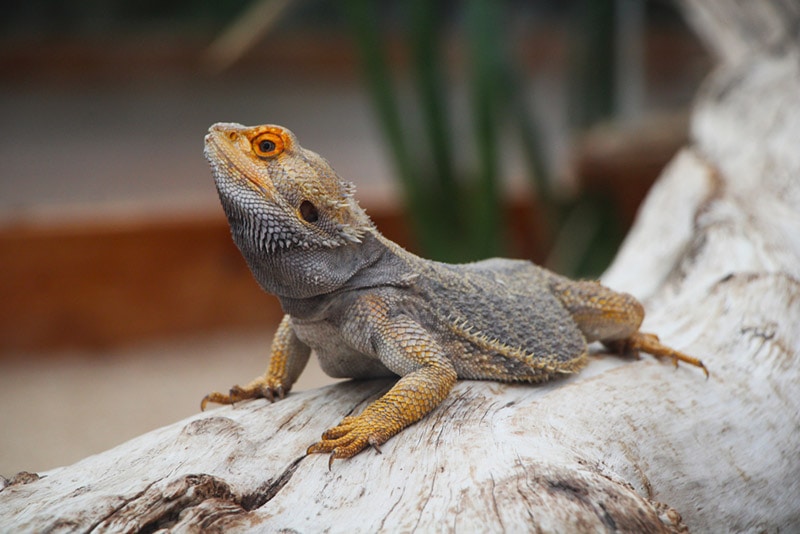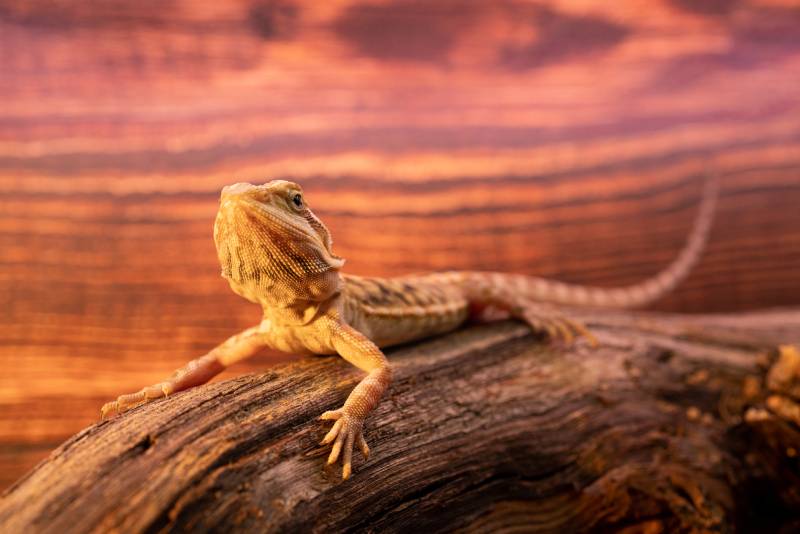How to Lower Humidity in a Bearded Dragon Tank: 4 Vet-Approved Ways

Updated on
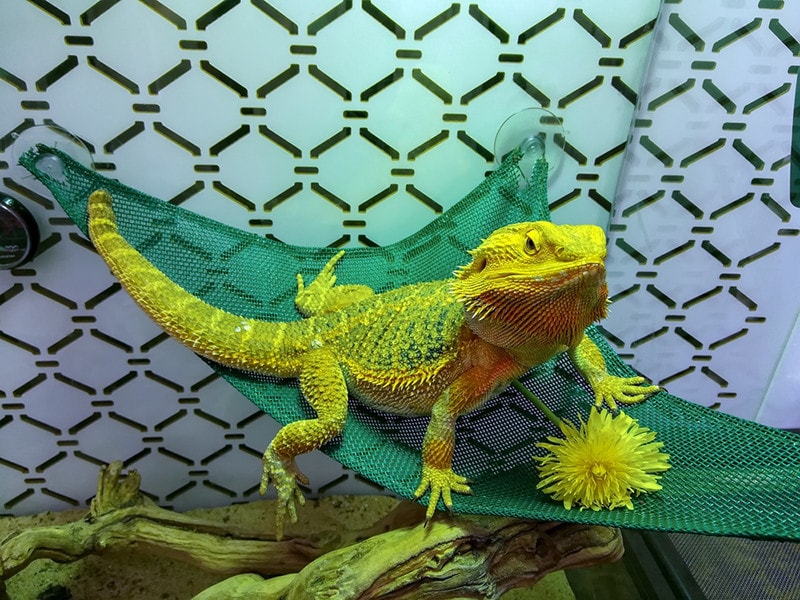
Maintaining the proper temperature and humidity levels in your bearded dragon tank is paramount to keeping it healthy. When the humidity is too high, it can develop significant health problems, including respiratory issues.
Fortunately, these tips can help you maintain the ideal humidity levels to give your dragon a comfortable environment.
What Is the Ideal Humidity for a Bearded Dragon?
Bearded dragons are native to arid environments in Australia. Their ideal humidity requirement is 20-30%. Young dragons (under 1 year of age) or dragons that are shedding have higher humidity requirements, at approximately 35-40%
If the humidity gets too high, your bearded dragon can develop respiratory conditions like an infection. It’s just as important as temperature, so you should outfit your bearded dragon’s enclosure with an accurate thermometer and hygrometer. The latter measures the water vapor in an enclosed space like a reptile tank.
Hygrometers measure relative humidity (RH) compared to the maximum temperature. There are two types of hygrometers to choose from:
- Psychrometer
- Mechanical hygrometer
A psychrometer has two thermometers with wet and dry bulbs. It measures the temperature changes from one bulb to the other. The temperature decreases as the moisture evaporates, which is measured by the wet bulb.
A mechanical hygrometer uses fibers to measure the humidity changes. The behavior of these fibers can then estimate the relative humidity. Some mechanical hygrometers are advanced and can be connected to your smartphone, while others have readings inside the enclosure.
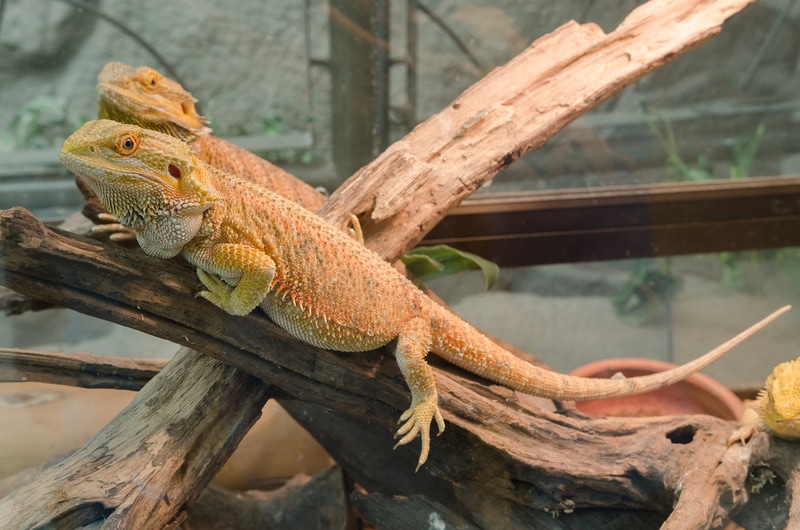
The 4 Ways to Lower Humidity in a Bearded Dragon Tank
Humidity levels fluctuate, so maintaining a stable range can be challenging sometimes. If you find that your humidity levels are too high in your bearded dragon enclosure, here are some things you can do:
1. Increase Ventilation
If the humidity is consistently high in your beardie’s enclosure, it could be because of the internal environment or the room the enclosure is in. Some spaces naturally hold more moisture than others, which translates to more humidity in your bearded dragon’s tank.
If the room itself feels muggy, try cracking a window or turning on a fan. If the room temperature and humidity are an issue, you may need to keep the AC on or move the tank into a different space. Dehumidifiers can also reduce the moisture in the room without impacting the temperature.
If the tank itself is holding too much humidity, you may need to replace the top or add mesh. Some tanks come with solid plastic covers that don’t offer much ventilation. You can simply cut some of the plastic and add mesh or invest in a mesh top.
2. Keep Water Sources Away from Heat Sources
Bearded dragons require a temperature gradient with a moderate ambient temperature of 77–89.6°F (25–32°C), and a hot side with a basking area at the highest temperature of 95–100.4°F (35–38°C). In addition, they need a cool area at night with a temperature range of 71.6–77°F (22–25°C).
If your tank is too small to provide a temperature gradient or you have the water bowl too close to your heat source, it will increase the humidity. As the water evaporates, the air around it absorbs the moisture and increases the humidity levels. Your water bowl should always be kept far from the heat source.
In addition, make sure your water bowl is not too large for the enclosure. Having too much water in a small space will naturally increase the humidity levels, no matter how far it’s kept from the heat source.
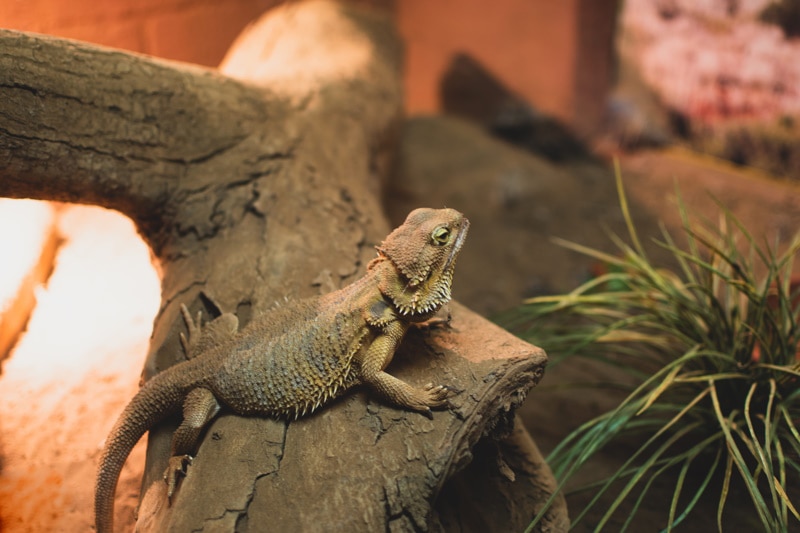
3. Switch Substrate
Different reptiles require different humidity levels, so there are plenty of options for substrate to help maintain moisture in the tank. Bark and coconut substrates are ideal for keeping humidity high for tropical and subtropical snake species, but they’re not ideal for animals that thrive in arid environments like a bearded dragon.
If high humidity is a recurring issue, consider switching your substrate to something that retains less moisture, such as clay sand or beech chips. If you’re not concerned about a naturalistic look, newspaper or paper towels can serve as an easy-to-clean substrate.
4. Avoid Misting
Bearded dragons require misting from time to time, but if the humidity levels are an issue, it’s best to hold off until you determine the cause. Making the other changes to the enclosure may make all the difference, but until you get stable levels, avoid misting.
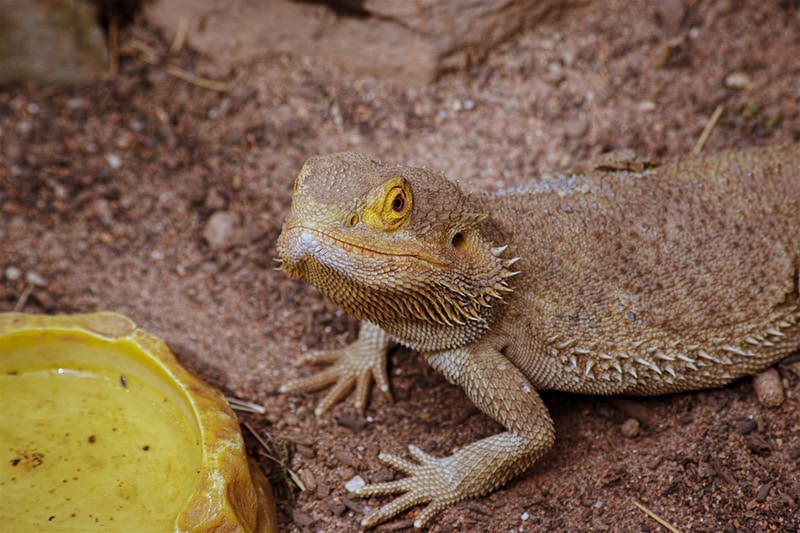
Why Does High Humidity Matter?
The goal of keeping any captive species is to mimic its natural environment as closely as possible.
Bearded dragons can become uncomfortable if their humidity is too high. While the occasional excess moisture isn’t necessarily a problem, prolonged high humidity goes against the environment the bearded dragon evolved to survive in, which leads to respiratory problems and other health conditions.
Last Thoughts
Bearded dragons are easy to care for, which is why they’re a popular option for a beginner. Though these lizards are tolerant of inexperience, it’s important to learn and maintain the ideal environment to keep your dragon happy and healthy. These tips should help you stabilize your bearded dragon’s humidity levels.
Featured Image Credit: Zh.anna, Shutterstock



